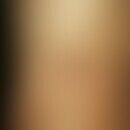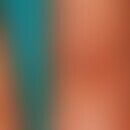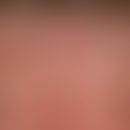Synonym(s)
DefinitionThis section has been translated automatically.
Lamii albi flos, also known as white deadnettle flowers, is a drug obtained from the dried petals with attached stamens. According to the specifications of Commission E, the drug is used in herbal medicinal products for the treatment of catarrhal diseases of the upper respiratory tract, mild oral mucositis and pharyngitis. It is also used externally for superficial skin inflammations.
Quality is specified in the German Drug Codex (DAC):
HMPC: not processed
ESCOP: not processed.
Commission E-monograph: Internal: Catarrh of the upper respiratory tract; external: Inflammation of the oral and pharyngeal mucosa, non-specific fluor albus (oral fluor); mild superficial inflammation of the skin.
Dead-nettle herb, s. Lamii albi herba
Empirical medicine: Gastrointestinal complaints, bloating and flatulence
IngredientsThis section has been translated automatically.
White dead-nettle flowers contain mucilage, essential oils, flavonoids, tannins, saponins, phenolic carboxylic acids, phosphohydrolases and oleanolic acid (about 0.15%).
You might also be interested in
EffectsThis section has been translated automatically.
White deadnettle flowers have an antipruritic, antiphlogistic effect. In addition, they inhibit secretion, have a slight surface anaesthetic effect, are astringent (tanning agents) and inhibit capillary permeability. A stimulation of skin fibroblasts could be experimentally proven.
Field of application/useThis section has been translated automatically.
Lamii albi flos is used for catarrhal inflammation of the upper respiratory tract, for mild inflammation of the throat and oral mucosa, for mild non-specific dermatitis. The drug is used folkloristically (effect not proven) for non-specific fluorus albus.
DosageThis section has been translated automatically.
For internal use, the daily dose is 3.0 g; for external use it is 5.0 g. Lamii albi flos is mostly used (according to Commission E) in the form of infusions or as a sitz bath (5.0 g on a sitz bath).
Undesirable effectsThis section has been translated automatically.
There are no known adverse effects.
ContraindicationThis section has been translated automatically.
in case of missing data children under 12 years, pregnant and breastfeeding women
InteractionsThis section has been translated automatically.
There are no known interactions with other substances.
LiteratureThis section has been translated automatically.
- Chudnicka A et al. (2005) Research of enzymatic activities of fresh juice and water infusions from dry herbs. J Ethnopharmacol 99:281-286.
- Paduch R et al. (2007) Investigation of biological activity of Lamii albi flos extracts. J Ethnopharmacol 110:69-75.
- Skalska-Kamińska A et al. (2014) Herbal preparation extract for skin after radiotherapy treatment. Part One--Preclinical tests. Acta Pol Pharm 71:781-788.
- Wójciak-Kosior M et al. (2005) HPTLC-densitometric method of determination of oleanolic acid in the Lamii albi flos. J Sep Sci 28:2139-2143.
- https://arzneipflanzenlexikon.info/taubnessel.php
- https://www.awl.ch/heilpflanzen/lamium_album/weisse_taubnessel.htm




